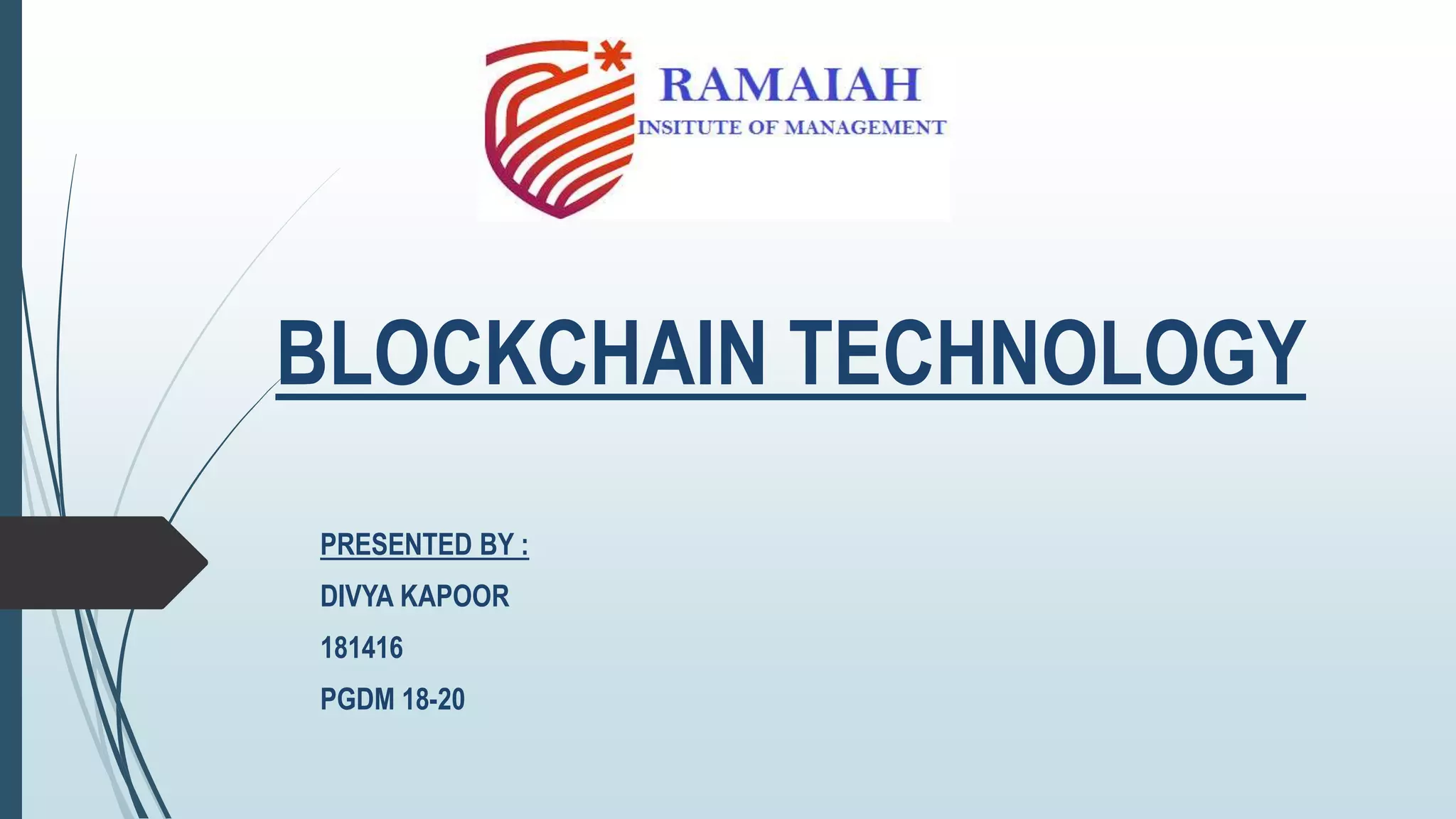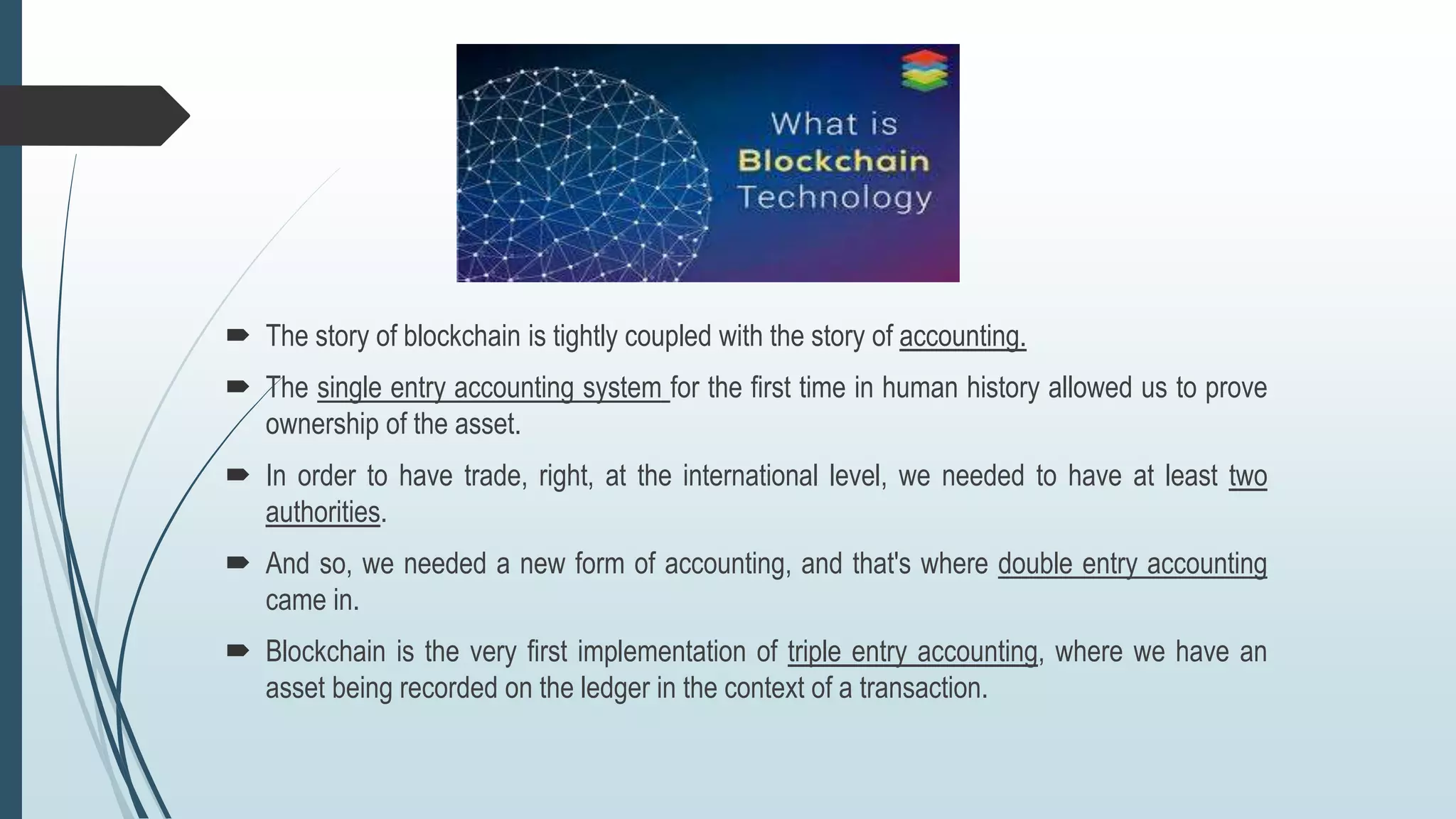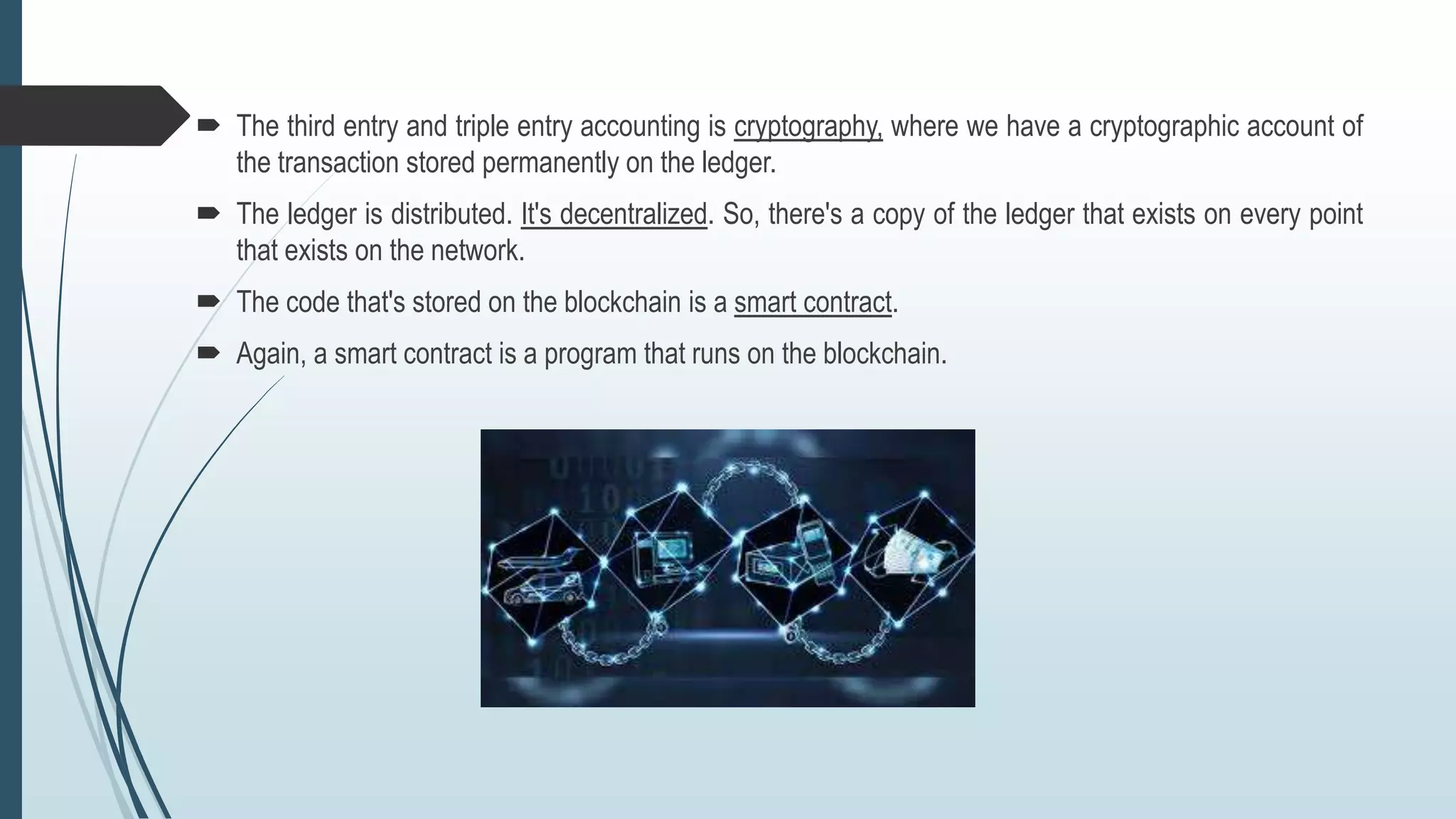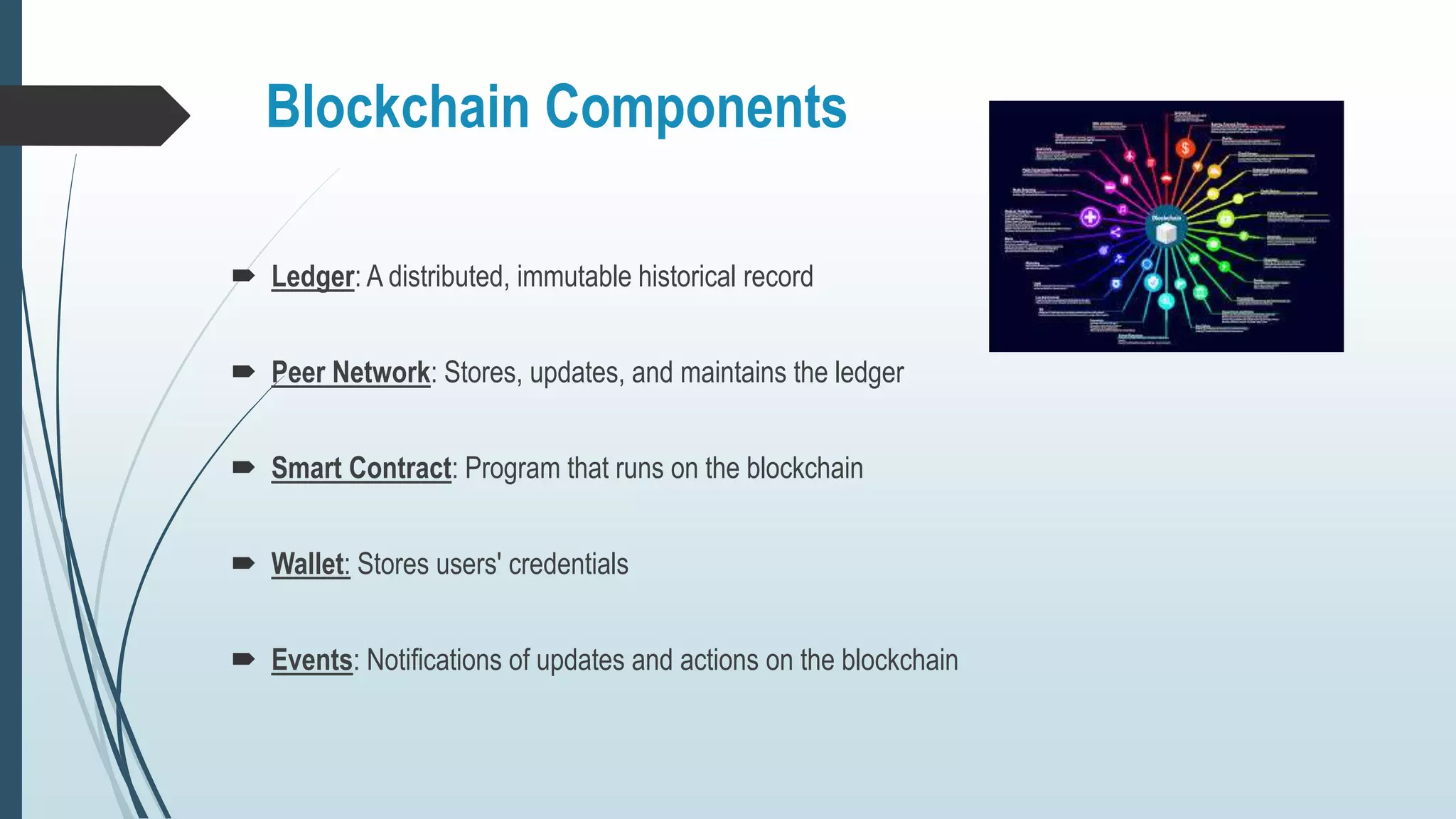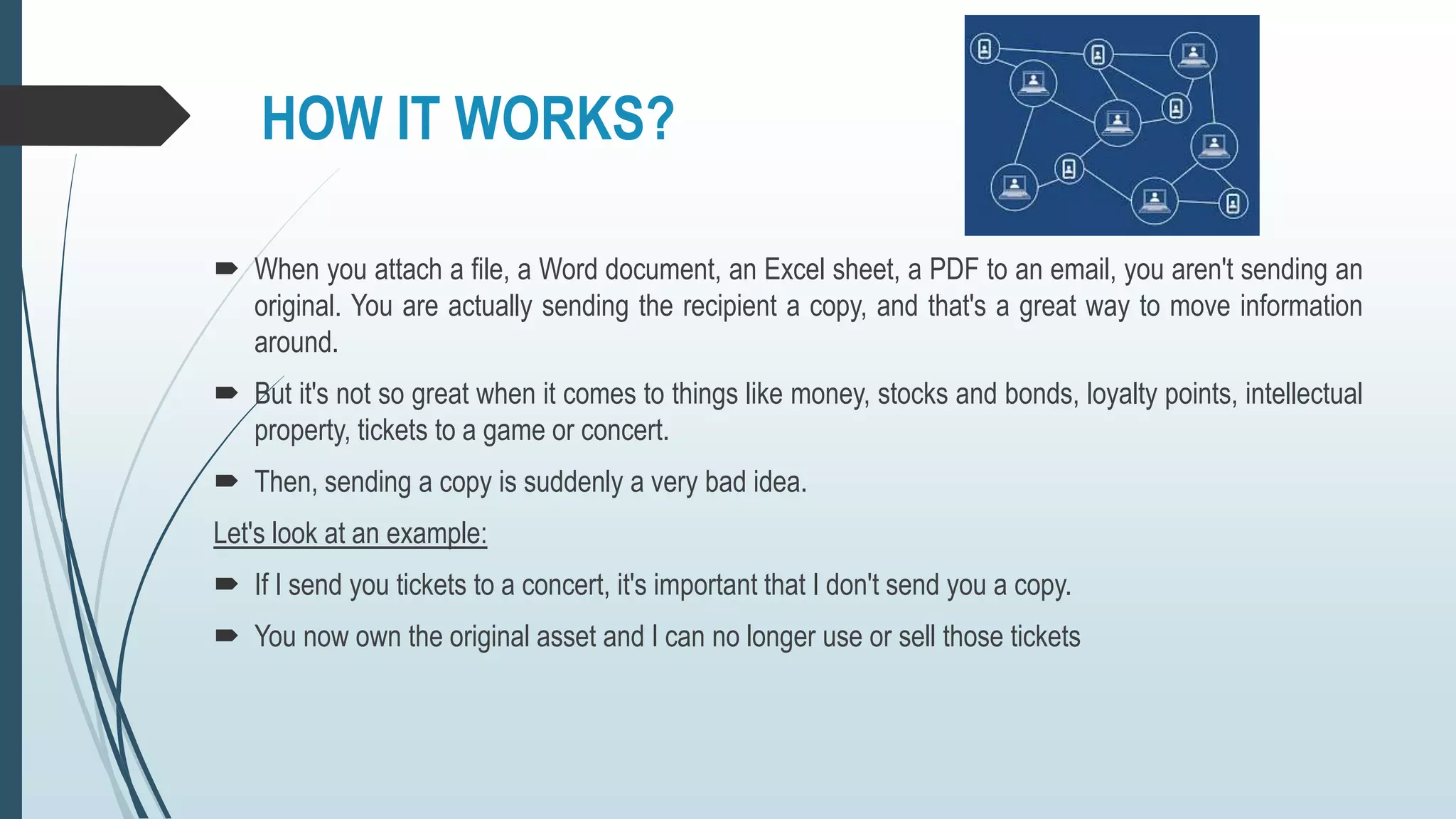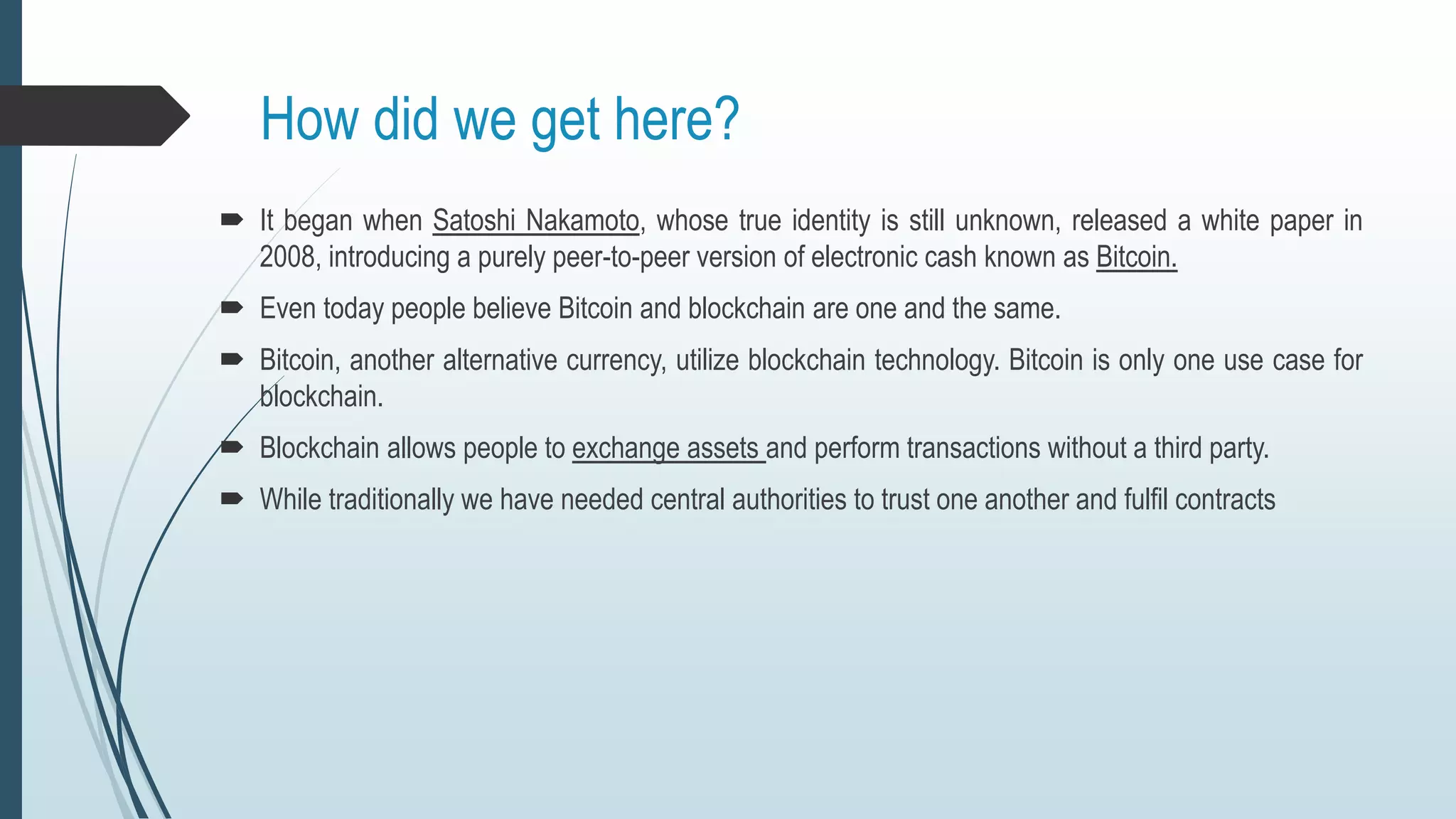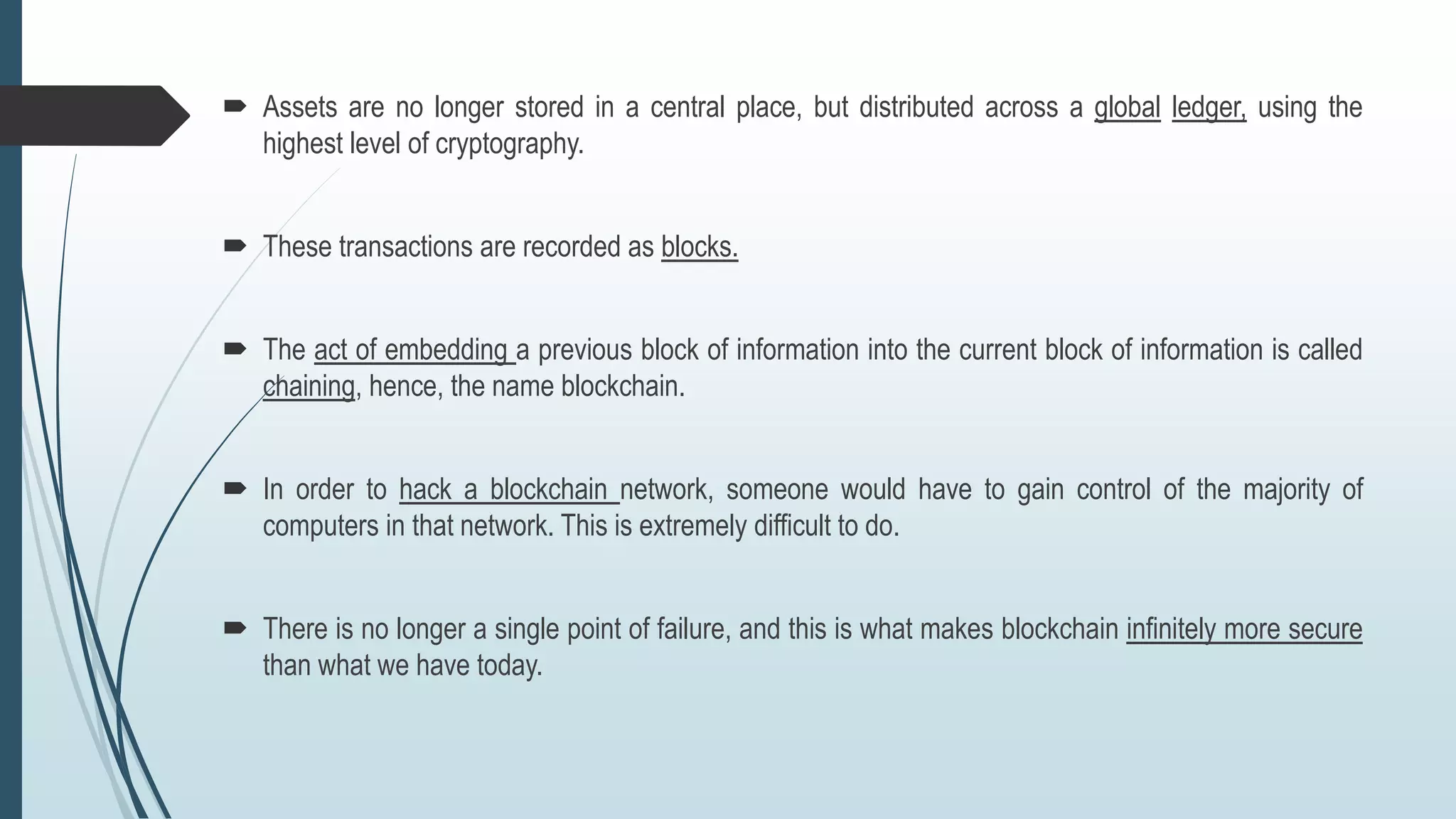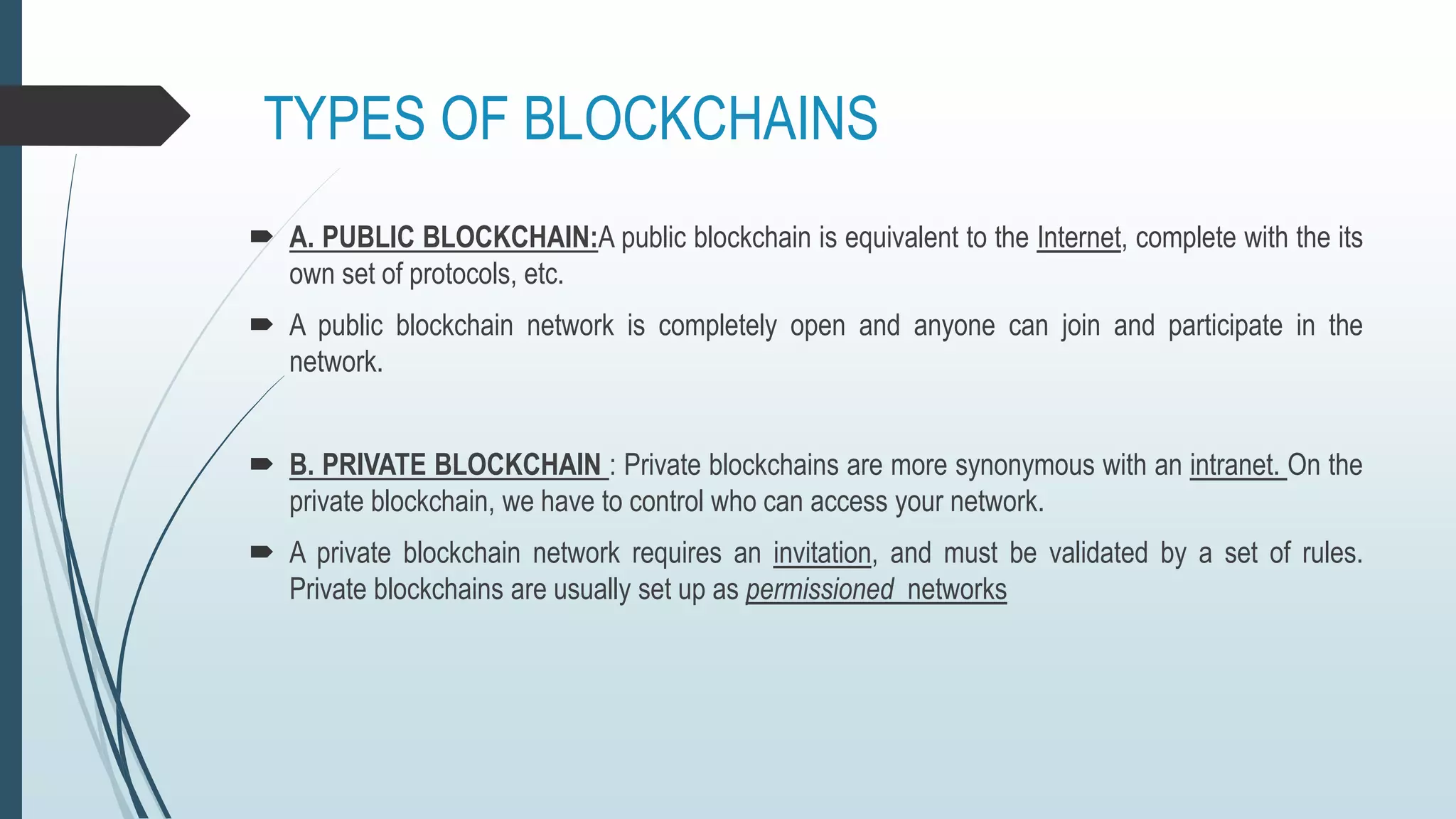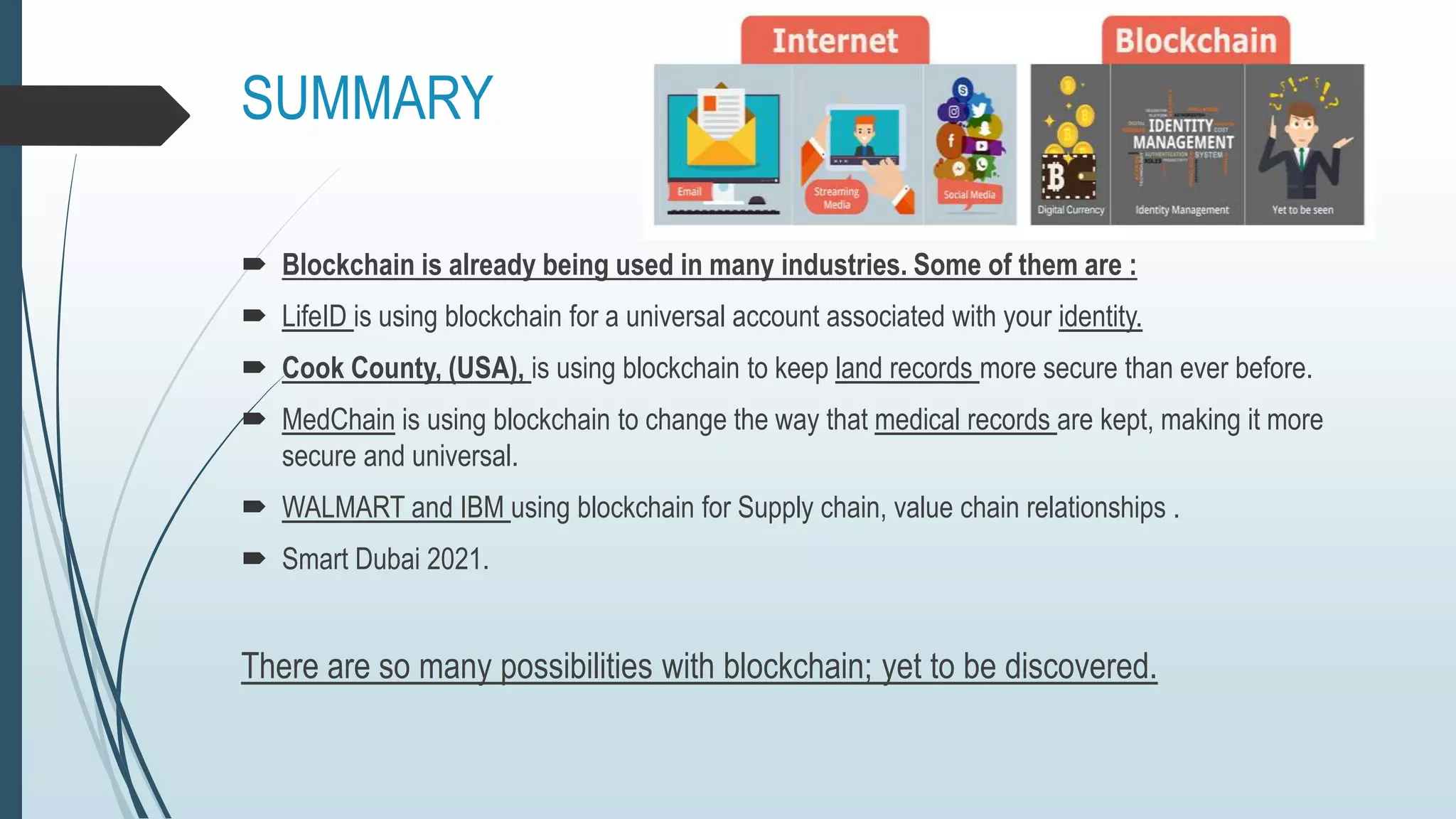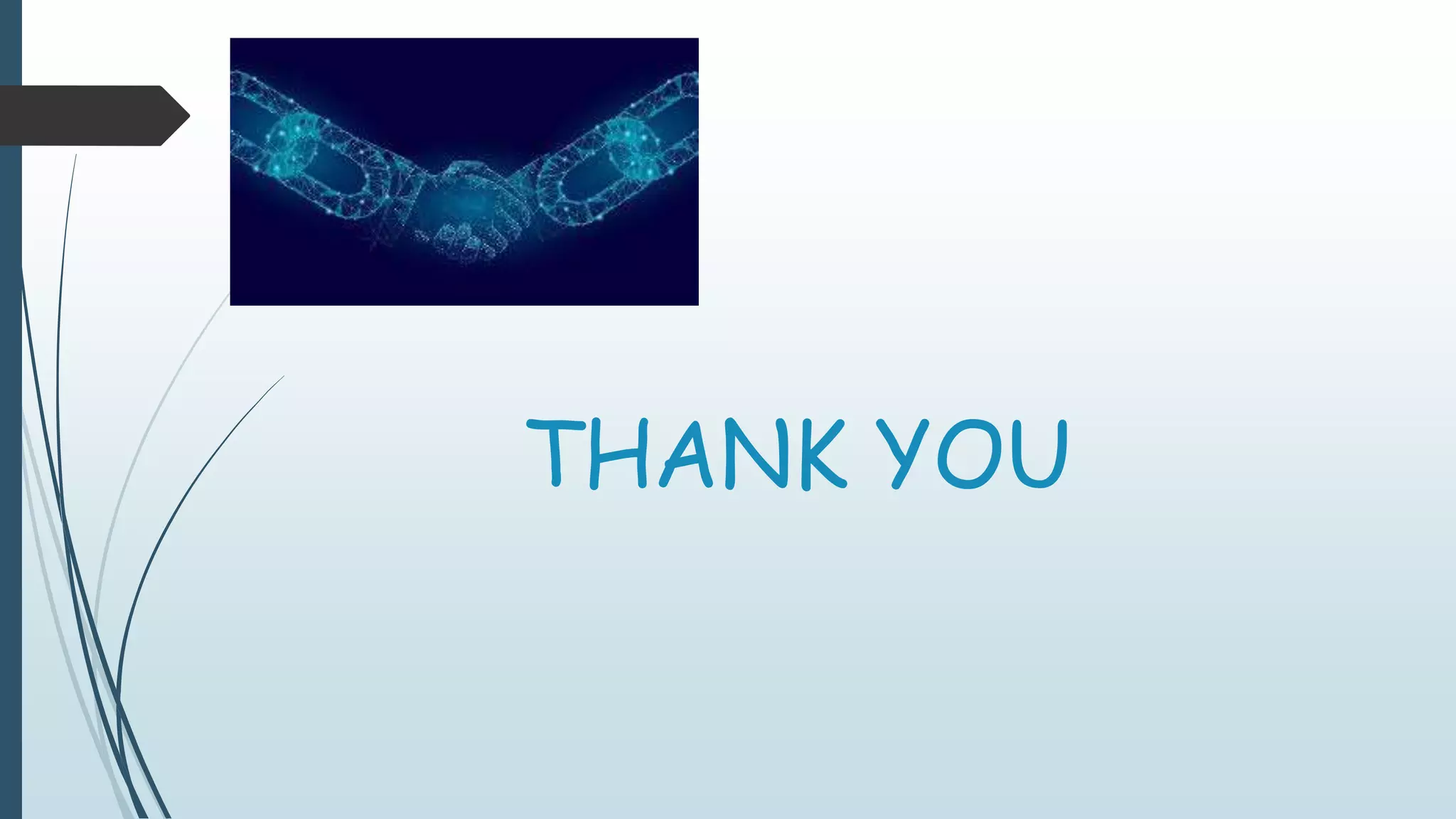Blockchain technology is a distributed ledger that allows assets to be exchanged without a central authority by recording transactions in blocks that are chained together using cryptography. It provides a secure and permanent record of ownership through its decentralized network of peer computers. There are two main types - public blockchains that anyone can join, and private blockchains that require permission to access. Blockchain is already being used in industries like identity management, land records, healthcare, and supply chain management.
